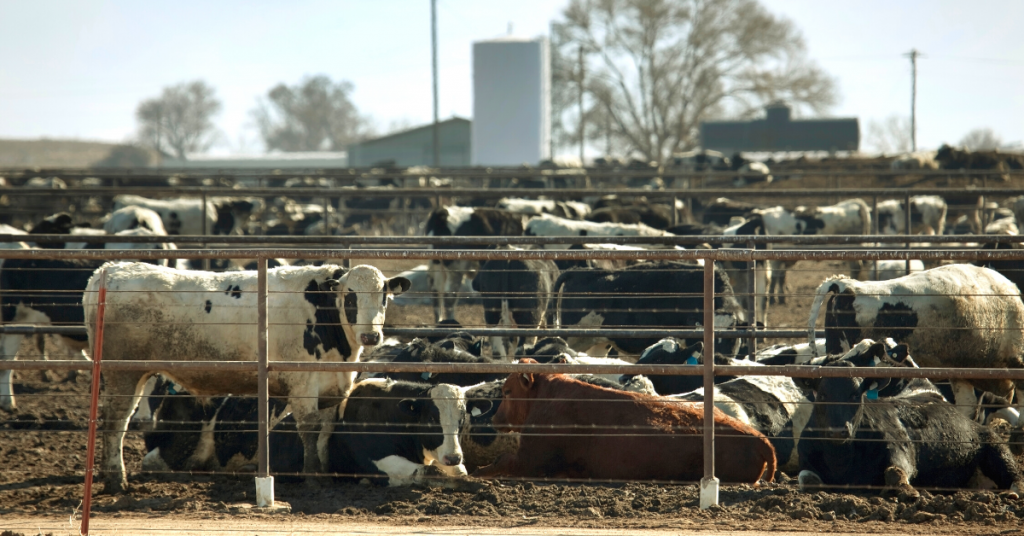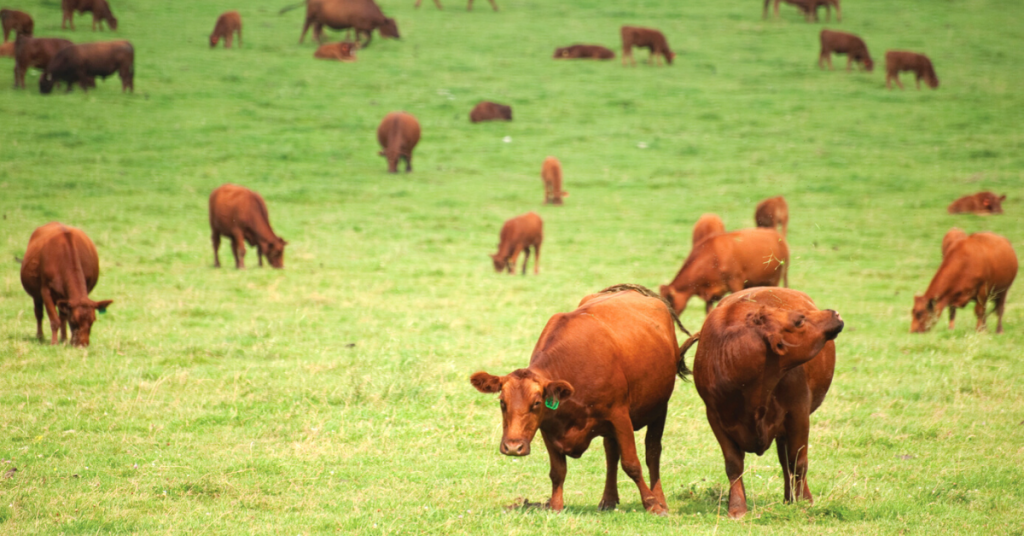Every decision you make in the grocery store has cascading effects across multiple industries and ecosystems. Including the type of beef you eat. Our agricultural practices have drastically changed since the domestication of cattle thousands of years ago, and the systems the United States have in place today are some of the most efficient in the world. But efficiency is not always a good thing. Especially when efficiency doesn’t mean sustainability.
The industrial revolution in the 18th century prompted agricultural cattle practices to go from being a local industry to one that’s now widespread and confined, where products from beef cows and other meat animals are shipped lengthy distances. The current practices have also streamlined their process in such a way that the balance of nutrients coming in and nutrients going out is lopsided, allowing an unhealthy amount of those outgoing nutrients to destroy neighboring ecosystems. Let’s face it – the meat industry in the 21st century is failing our planet. Rather than letting that discourage you from eating meat, choose to eat meats that are not adding on to this long list of environmental concerns.
Let’s talk beef!
Several buzzwords surround the beef industry, and for any average consumer, it might be confusing to distinguish what these buzzwords mean, and you might have questions regarding your beef purchases. So we’re breaking it down for you!

What is ‘grain-fed’ beef?
‘Grain-fed’ beef means the animal has primarily consumed a grain-heavy diet throughout its lifetime. Animals like this typically reside in large feedlots called Concentrated Animal feeding Operations (CAFOs) and are rapidly fed a diet made from soy or corn that fattens them up as quickly as possible.
We steer clear of using any meat reared in CAFOs and recommend that you avoid buying this kind of meat as well. Not only is this meat highest in fat content, making it the unhealthiest beef around, the conditions the cattle are raised in are damaging and depleting our environment.
What is ‘100% grass-fed’ beef?
This term can definitely get confusing, especially when compared with ‘pasture-raised.’ Beef that is labeled as ‘100% grass-fed’ is regulated by the USDA, although not always strictly enforced, and means the cattle’s diet consists entirely of grasses and forages once it’s weaned off milk. Keep in mind that this label has nothing to do with the cattle receiving antibiotics or hormones though or even if it ever goes out to pasture, so even though the animal consumed 100% grass, it still could’ve consumed antibiotics and it still could’ve never seen a pasture in its lifetime.
Grass-fed beef is better than grain-fed beef in our opinion, but we still try to avoid this. We feel that hormones and antibiotics shouldn’t be used in our food and believe an animal is best raised in its natural habitat.

What is ‘pasture-raised’ beef?
Beef that has been ‘pasture-raised’ is beef that has spent a portion of their lives on pasture (a minimum of 120 days to be exact). It differs from ‘100% grass-fed beef’ because ‘pasture-raised’ beef actually live on the pasture for part of their lives. Another difference is that ‘pasture-raised’ beef does not have to be 100% grass-fed. For example, cattle farms in colder climates will bring their cattle into a barn during the winter and may supplement their diet with some grain to keep their animals warm and happy.
When it comes to sourcing meat, mademeals strictly sources pasture-raised meat.
Our beliefs align with how pasture-raised animals are kept. Rather than just being on a grass-fed diet, the animal actually gets to graze on fresh pasture, allowing the cattle to express the normal behaviors it has while also getting the nutrients directly from the source.
At mademeals, we want to eliminate any unnecessary step when it comes to eating, so when it comes to meat, we know pasture-raised is best.
